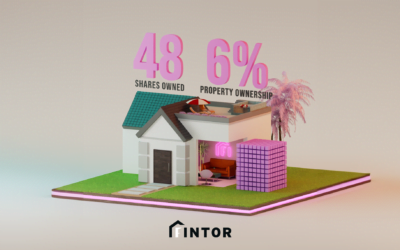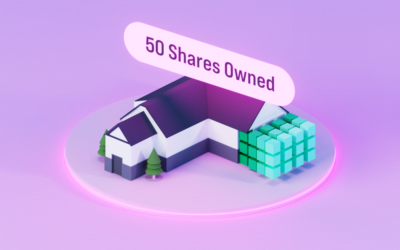Fixed rate, adjustable rate, balloon, interest-only. What does it all mean? This guide explains different categories of real estate debt, their pros, their cons, and more.
There are many different types of real estate transactions and strategies. For example, first-time home buyers are typically looking to secure long term financing with predictable payments and a low interest rate. They may want to pay off that home over a term of 20 or 30 years.
On the other hand, a construction firm might want to finance a new project over 2 years and sell the project once it’s fully built. As such, there are many different types of debt financing available.
This guide walks through the most common types of real estate debt:
- Fixed-rate mortgage
- Adjustable-rate mortgage
- Interest-only ARM
- Balloon mortgage
- Hard money loan
- Blanket loan
- Conventional loan
Remember that interest rates and loan amounts vary considerably based on factors like creditworthiness, asset type, personal track record, purchase price, and neighborhood.
Mortgage for Buy and Hold
The most common loan for consumers is the residential mortgage. It provides the longest duration and low rates, since it’s secured by both the home itself and the owner’s income.
Mortgages can have different term lengths, but the most common are 15-year, 20-year, and 30-year. The original intent behind the 30-year mortgage was to align the buyer’s professional career with the payoff of their home, so they can enter retirement without loan payments.
The real estate property itself is used as collateral in the loan. That means if the borrower is unable to make payments, the lender can repossess the house. Furthermore, a mortgage could be recourse debt or nonrecourse debt.
Recourse debt means that the lender can go after an individual’s other assets (e.g., money, stocks, other properties) for nonpayment of the loan. Nonrecourse debt means that the lender can only go after the real estate itself and not the borrower’s other personal assets.
As such, these loans are issued based on a combination of the property’s value and the buyer’s creditworthiness. Typical residential mortgages require a down payment (usually 20%, but can be as low as 10% in certain situations) to align the incentives of the buyer and lender.
Private mortgage insurance (PMI) is required for consumers who do not put at least 20% down on a property. This insurance helps protect the lender if a homeowner cannot continue to make payments.
A fixed-rate mortgage, also called a conventional mortgage, is a loan where the interest rate is fixed over the duration of the loan. Since the amount borrowed and the interest rate are both fixed, the monthly payments are even over the whole course of the loan. In the beginning of the loan, the payment is more heavily skewed towards interest. Over time, you pay less in interest and more in principal.
An adjustable-rate mortgage (ARM) is a loan where the interest rate (and thus, the monthly payments) change based on the market interest rate. ARM loans come up with an initial period with fixed payments, then the remaining payments adjust based on the market rate.
Certain adjustable-rate mortgages also have an interest-only period (these loans are abbreviated to IO ARM or IO). This interest-only period can reduce monthly payments but often comes with an additional cost.
Borrowers should be careful to understand how their payments change after the initial period and what the worst case scenario could look like when rates adjust.
A balloon mortgage is a loan that includes a lump sum payment somewhere in the loan term. In a balloon mortgage, the monthly payments do not cover the full amount of a loan and the balloon is the mechanism to pay off the loan in its entirety.
Hard Money Loan for Fix and Flip
A hard money loan is a loan that is secured against the real property and does not rely on the financial position of the applicant. These loans can be advantageous for situations where the buyer wants to renovate or remodel a property.
Keep in mind that interest rates for hard money loans are significantly higher than conventional mortgages, making them ideally suited for short time frames, such as less than one year. Since the rates are higher, it is ideal to have an exit scenario in place to repay a hard money loan.
Blanket Loan for Real Estate Development
In the examples above, each loan was secured by an individual asset. This works well for individuals who will live in a residence or someone who is flipping houses one by one.
But what about bigger operations? What if you’re a real estate developer and want to buy multiple parcels of land or redevelop several projects at a time?
The blanket loan is a mortgage that has a lien against two or more properties. Blanket loans are used when additional collateral is needed or when multiple purchases are made at the same time.
If you plan to purchase 10 properties, it can be cheaper and faster to secure a single blanket loan for $5,000,000 as opposed to individual loans of different amounts. However, this strategy does involve more risk as you are putting all (or most) of your eggs in one basket.
Conventional Debt Financing
Alternatively, you could also turn to conventional debt financing to increase your capital on hand. For example, an individual with high income and good credit could secure a personal loan and use that to purchase real estate.
This gives them the freedom to buy one or more properties without financing getting in the way. In this case, the buyer could make an all cash offer since the personal loan is not tied directly to the property/properties in question.
Furthermore, companies or funds could look at a combination of different forms of debt (e.g., asset-backed mortgage, business loan, business line of credit) to give them the right mix of interest rate, risk, and convenience.
Summary
Real estate is a large and diverse asset class. There are many types of real estate categories and investment strategies. As such, there are different types of real estate debt that are available to individuals and businesses.
The most common real estate debt includes fixed-rate mortgages, adjustable-rate mortgages, interest-only ARM, balloon mortgages, hard money loans, blanket loans, and conventional debt.
Depending on a borrower’s goals, creditworthiness, and time horizon, different loans should be considered in different scenarios.
For example, an individual who lives in a primary residence and wants to buy their first investment property should not look at a blanket loan. Those are typically suited for real estate developers who have an extensive track record and want to purchase dozens of properties at a time.
Similarly, you should not consider a hard money loan if you plan to renovate and keep a property for years. The high interest rate of a hard money loan should be used as temporary financing.



